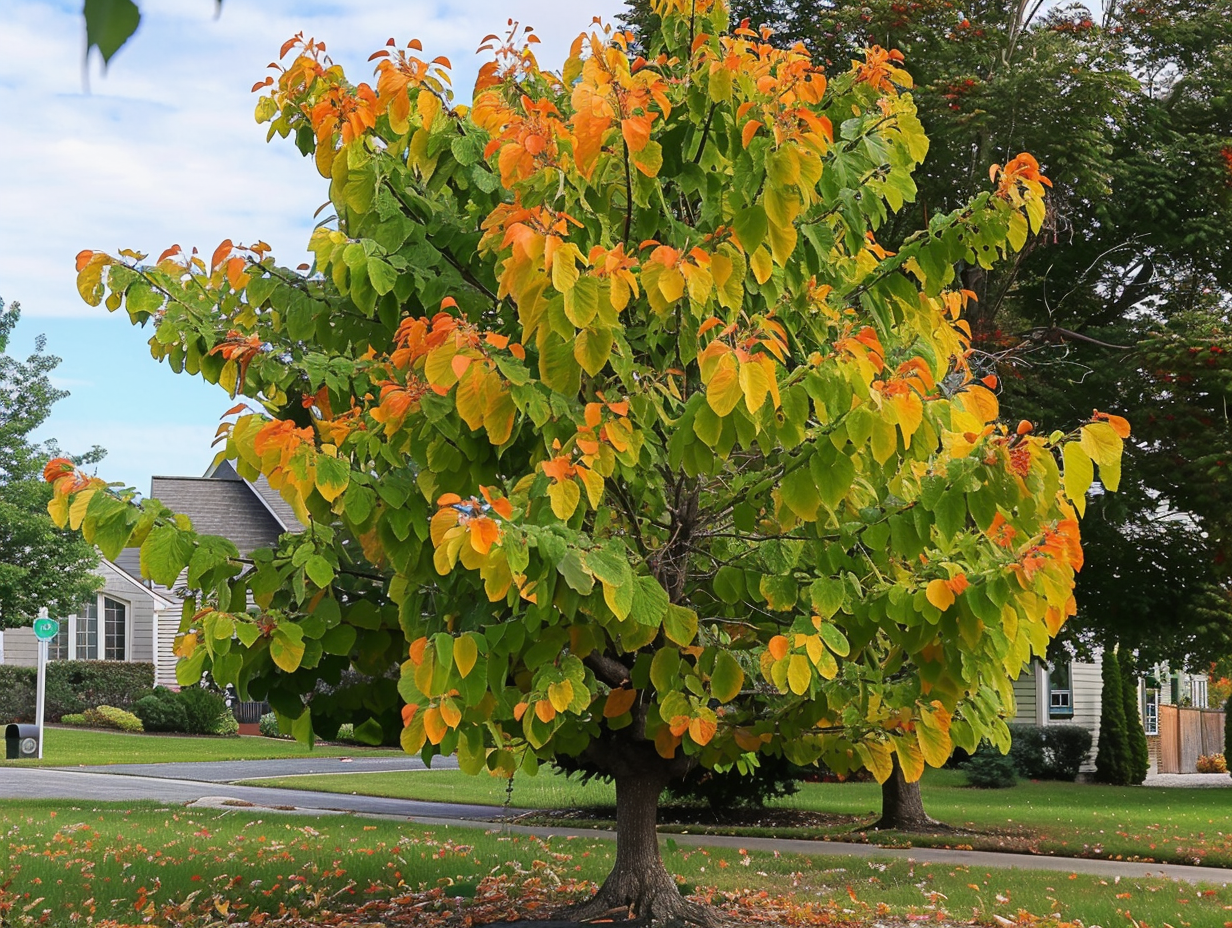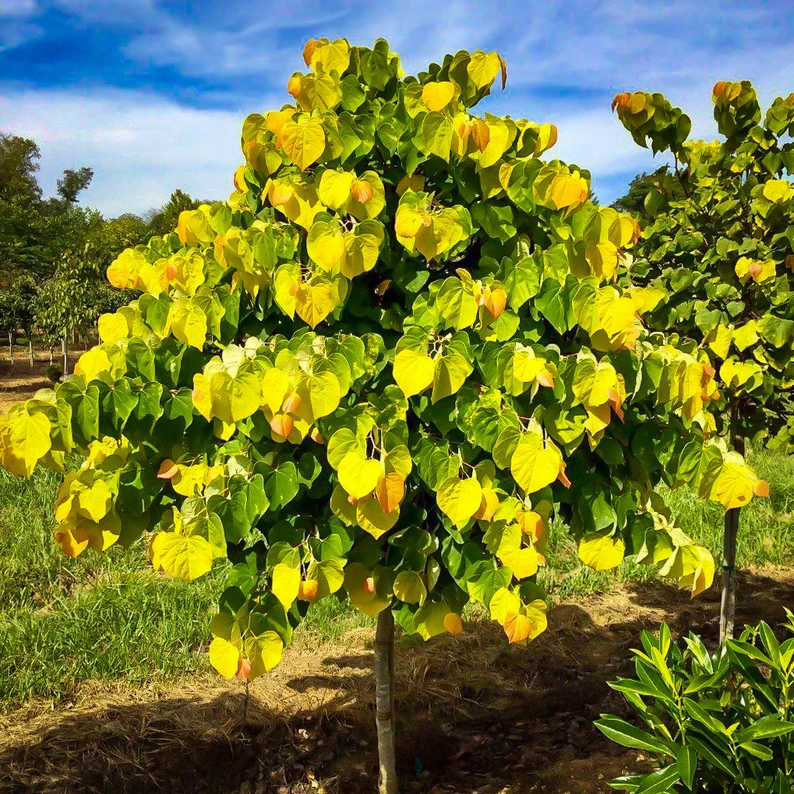When it comes to adding a splash of color and charm to your garden, few trees can compete with the Rising Sun™ Redbud (Cercis Canadensis). This North Carolina native tree isn’t just about looks—it’s packed with history, easy to propagate, and versatile in its uses. Whether you’re a seasoned gardener or just starting out, understanding the ins and outs of this incredible tree can help you make the most of its potential in your landscape.
Please note: The Cameron Team has not been paid or received any other compensation to include any of the products featured on this post, but the author has included affiliate links and content. If you click on a link, they may earn a commission – a high-five for great content!
A Brief History of the Rising Sun Redbud
The Rising Sun™ Redbud is a cultivar of the Eastern Redbud, scientifically known as Cercis Canadensis. The Eastern Redbud has long been a staple in North American landscapes, particularly in the eastern United States, where it thrives in forests and along streams.
This particular cultivar, the Rising Sun™, is a relatively recent addition to the horticultural world. Discovered by Ray Jackson in Tennessee, the Rising Sun™ Redbud quickly gained attention for its unique foliage, which transitions from bright gold to orange and finally to deep green as the leaves mature. Its vibrant colors, coupled with the iconic pink-lavender blooms that emerge in spring, make it a standout choice for gardeners looking to add year-round interest to their yards.
Propagation: How to Grow Your Own Rising Sun Redbud
Thinking about growing your own Rising Sun Redbud? You’re in luck—it’s not as tricky as you might think!
Seed Propagation
The most common method of propagation is from seed. Here’s a step-by-step guide:
- Seed Collection: In late summer or early fall, collect seeds from mature Rising Sun Redbud pods.
- Seed Preparation: To break dormancy, seeds need a process called stratification. Soak the seeds in warm water for 24 hours, then place them in a plastic bag with moist sand. Store them in the refrigerator for about 60-90 days.
- Sowing: After stratification, plant the seeds in well-draining soil about ¼ inch deep. Keep the soil moist and place the container in a warm, sunny location.
- Germination: Seeds typically germinate within a few weeks. Once seedlings have developed a couple of true leaves, they can be transplanted into larger pots or directly into the ground.
Propagation by Cuttings
If you’re looking for a quicker method, try propagating from softwood cuttings:
- Cutting Selection: In late spring or early summer, select a healthy, young branch and take a 6-inch cutting just below a leaf node.
- Rooting Hormone: Dip the cut end in rooting hormone to encourage root development.
- Planting: Insert the cutting into a pot filled with a well-draining mix of sand and perlite. Water thoroughly and cover with a plastic bag to maintain humidity.
- Rooting: Place the pot in a bright, indirect light. In about 4-6 weeks, roots should begin to form. Once rooted, the cutting can be transplanted.
Where to Purchase Rising Sun Redbud Tree
The Rising Sun Redbud may be available to purchase at local garden centers in the spring. It’s also available at a variety of online stores, like the Arbor Day Foundation, New Blooms, or Ty Ty Nursery. You may even purchase it from small nurseries on Etsy.
Planting the Rising Sun Redbud: Tips for Success
Ready to plant your Rising Sun Redbud in the garden? Here’s what you need to know:
Site Selection
Choosing the right location is key. The Rising Sun Redbud prefers:
- Sunlight: Full sun to partial shade. It will produce more vibrant foliage in sunnier spots.
- Soil: Well-draining soil with a neutral to slightly acidic pH is ideal.
- Space: Ensure there’s enough space for the tree to spread out. The Rising Sun Redbud can reach 8-15 feet tall and wide.
Planting Steps
- Dig the Hole: Dig a hole that’s twice as wide as the root ball but only as deep as the root ball itself.
- Planting: Place the tree in the hole, ensuring that the top of the root ball is level with the surrounding soil. Backfill with the excavated soil, gently firming it around the roots.
- Watering: Water the tree thoroughly after planting to help settle the soil and eliminate air pockets.
- Mulching: Apply a 2-3 inch layer of mulch around the base of the tree, keeping it a few inches away from the trunk to prevent rot.
Uses of the Rising Sun Redbud: More Than Just a Pretty Face
While the Rising Sun Redbud is undoubtedly a showstopper in the garden, it also offers a variety of uses:
Ornamental Value
The primary use of the Rising Sun Redbud is ornamental. Its vibrant foliage, coupled with its compact size, makes it perfect for small gardens, patios, or as a focal point in larger landscapes. The pink-lavender flowers in spring are a delightful contrast to the golden foliage, adding visual interest from season to season.
Wildlife Attraction
The tree’s flowers are a magnet for pollinators, including bees and butterflies. In the fall, its seeds provide food for birds and small mammals, making it an excellent choice for wildlife-friendly gardens.
Erosion Control
The deep root system of the Rising Sun Redbud helps to stabilize soil, making it useful in erosion control, particularly on slopes or in areas prone to runoff.
Cultural and Medicinal Uses
Historically, the bark of the Eastern Redbud (Cercis Canadensis), including its cultivars, has been used by Native American tribes for various medicinal purposes, including treating whooping cough, fever, and dysentery. While the Rising Sun Redbud is primarily cultivated for ornamental use today, its historical significance adds to its charm.
Final Thoughts: Why the Rising Sun Redbud Deserves a Spot in Your Garden
With its stunning foliage, ease of propagation, and practical uses, the Rising Sun Redbud is a must-have for any garden enthusiast. Whether you’re drawn to its beauty, its role in supporting wildlife, or its historical significance, this tree has something to offer everyone.
So, are you ready to plant a Rising Sun Redbud and watch your garden burst into color?





